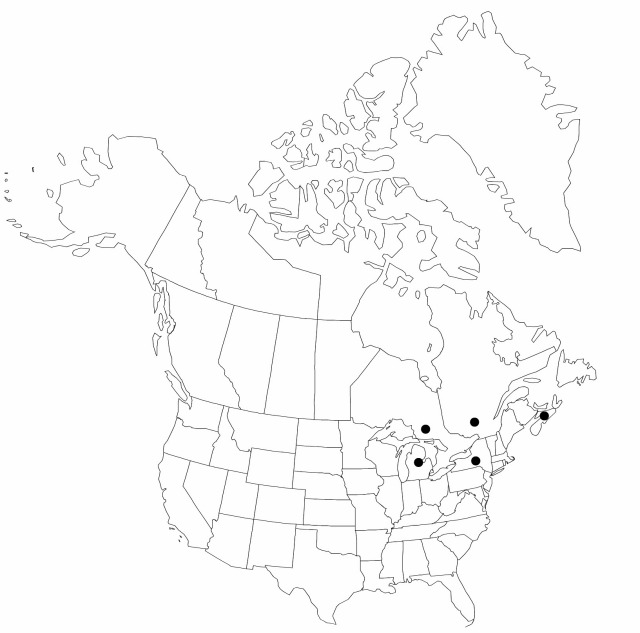Carex flacca
Spic. Fl. Lips., 178. 1771.
Culms obtusely trigonous, to 35 cm × 1.5 mm, scabrous distally. Leaves: sheaths with blades, to 2 cm, rough, fronts spotted redbrown apically, ladder-fibrillose, orifice redbrown, slightly prolonged beyond blade and sheath, leathery; blades 35 cm × 3 mm, margins rough; proximal blades blue-green, densely papillose. Inflorescences to 10 cm; peduncle of staminate spike to 2.5 cm; proximal bracts about equaling inflorescences; staminate spikes 1–3; pistillate spikes 2–3, to 4 cm × 4 mm. Scales redbrown with green midrib and hyaline margins, obovate, apex obtuse or with short mucro to 0.3 mm, equaling perigynia and narrower. Anthers to 2.5 mm. Perigynia ascending, green, spotted redbrown on distal 1/2, sessile, 2.2 × 1.4 mm; beak orifice purple-brown, glabrous. Achenes brown, 1.6 × 1.1 mm.
Phenology: Fruiting Jul.
Habitat: Abandoned quarries, ditches, marshes, wet forest edges
Elevation: 0–800 m
Distribution

Introduced; N.S., Ont., Que., Mich., N.Y., Europe, New Zealand
Discussion
Carex flacca occurs throughout Europe, especially on calcium-rich soils. It is sparsely introduced in North America, but appears to be increasing. The species is superficially similar to and may be mistaken in the field for one of the smaller species of sect. Phacocystis.
Selected References
None.
Lower Taxa
"shortened" is not a number."narrower" is not a number.
